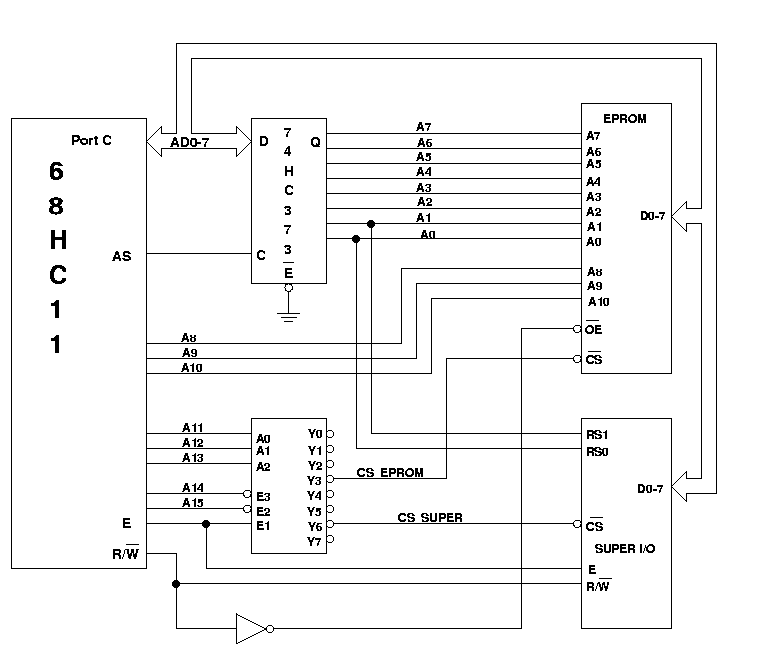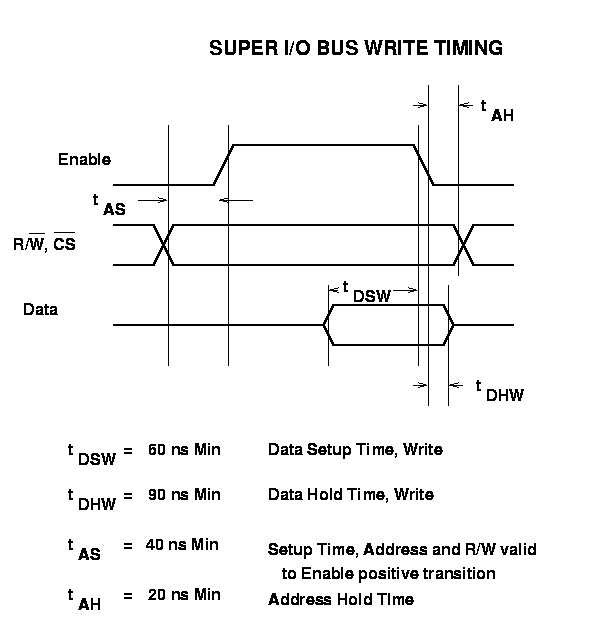A716 = 2
A716 = 10 (assuming
A716 is unsigned)
A716 = 10 (assuming
A716 is signed)
Do the following operations on eight-bit numbers. Indicate the eight-bit answer, and whether a carry and/or overflow was generated:









- How do you clear the Timer Output Compare 2 (TOC2) flag? Write some C code which will do this.
- How do you clear the SCI Receive Data Register Full (RDRF) flag? Write some C code which will do this.
- How do you clear the 6821 IRQB1 flag? Write some C code which will do this.
- How do you clear the SPIF flag? Write some C code which will do this.
- How do you clear the AD Conversion Complete (CCF) flag? Write some C code which will do this.
.area CODE (ABS)
.org 0x2000
lds #0x01ff
ldaa #0x00
inca
staa 0x1004
- How many bytes of memory does the code fragment occupy?
- How many E-clock cycles will it take to execute the four instructions of the code fragment?
- How many microseconds will it take the fragment to execute on an HC11 with a 2 MHz E-clock?
- Complete the following table showing what's on the address, data and
control bus for each E-clock cycle:

- At reset, what is the smallest time interval the HC11 can measure?
- You can change this smallest time interval. What are the possible values, how do change the interval, and what special consideration do you need to observe when making the change?
- Briefly explain the concept of the output compare function.
- Briefly explain the concept of the timer overflow interrupt.
- What is the basic difference between the Serial Peripheral Interface (SPI) and the Serical Communications Interface (SCI)?
- How long does it take the A/D converter to make a sequence of four conversions?
- An HC11 has
VRL = 1V and \verbVRH = 3V. The input on Pin 3 of Port E is 2.4 V. What will be in the A/D result register after a conversion?
- List at least six things you need to do in your program to use
interrupts properly.
i)
ii)
iii)
iv)
v)
vi) - Explain what happens to the stack, stack pointer and condition code
register when an interrupt is generated. Assume
SP = 0x01ffat the time of the interrupt. - You want to capture the time of a falling edge on Timer Input Capture 3.
- Which pin on the HC11 will you connect your input line to?
- Write a function
setup_tic3()which will set up TIC3 to generate an interrupt on the falling edge. - Write an interrupt service routine
tic3_isr()which will save the time of the falling edge in a global variable calledtic3_time.

- Explain the function of the HC11's Port B and Port C in expanded mode.
- What range of addresses access the User EPROM,
CS_EPROM? - What range of addresses access the Super I/O chip,
CS_SUPER? - How many registers does the Super I/O chipt have?
- Write a C
#definewhich will access Register 3 of the Super I/O chip:#define SUPER_REG3 = ___________________________________

-
tDSWDescription: HC11 Time: _____________ Circled Number: _________ Compatible? ________
-
tDHWDescription: HC11 Time: _____________ Circled Number: _________ Compatible? ________
-
tASDescription: HC11 Time: _____________ Circled Number: _________ Compatible? ________
-
tAHDescription: HC11 Time: _____________ Circled Number: _________ Compatible? ________